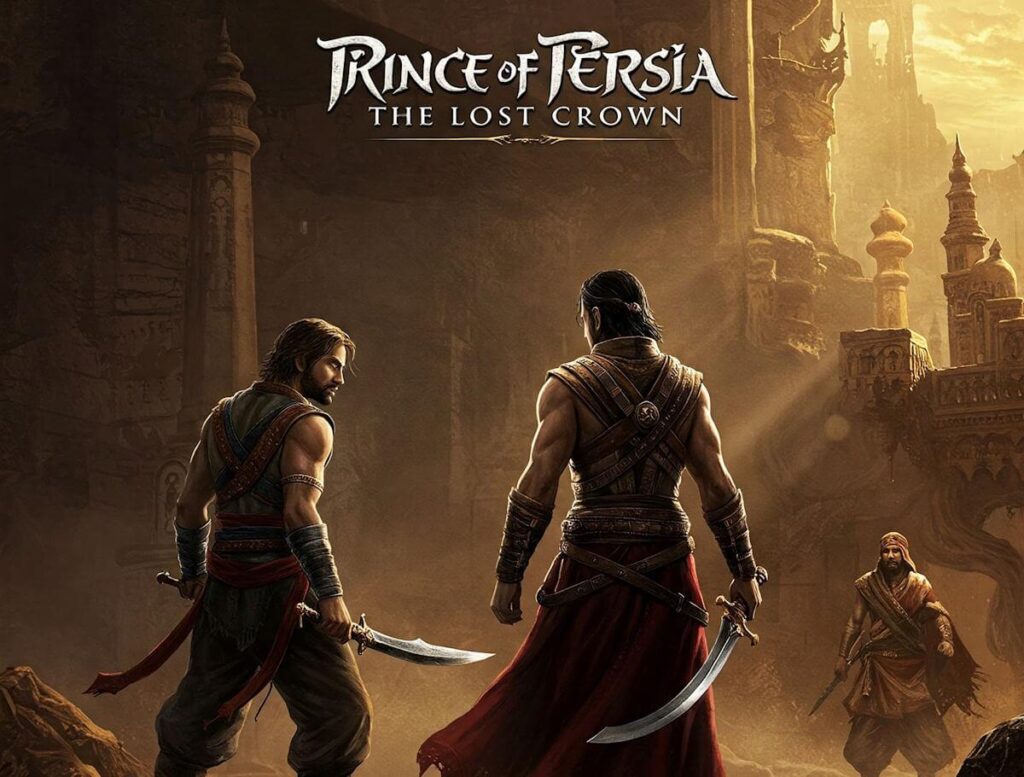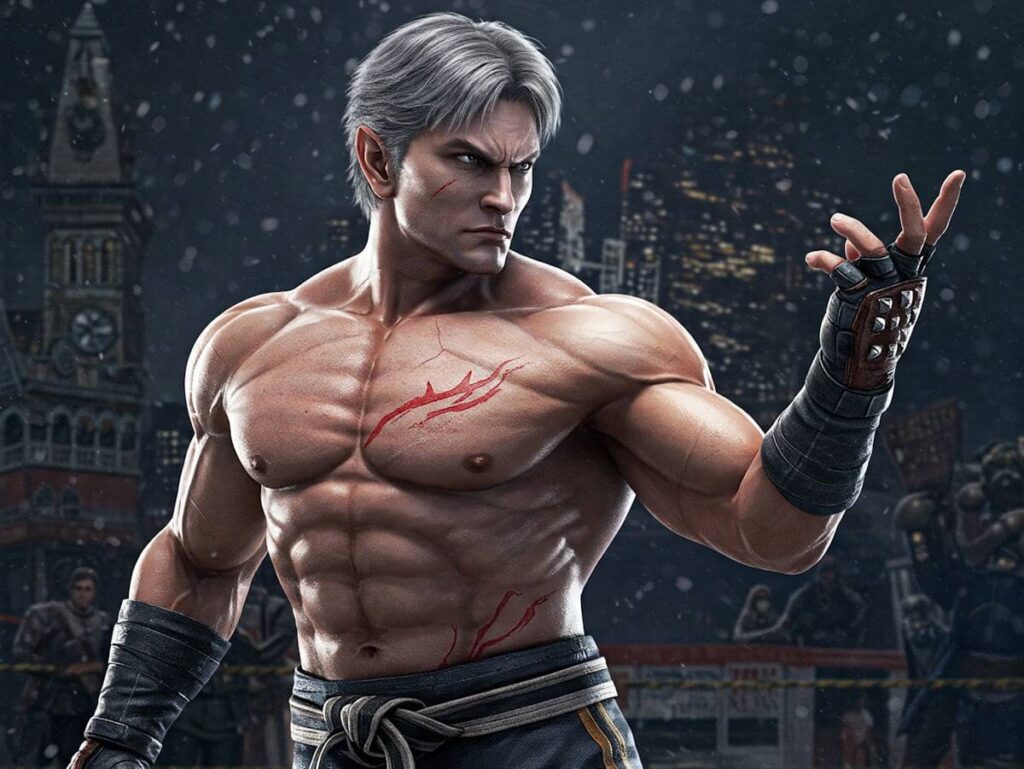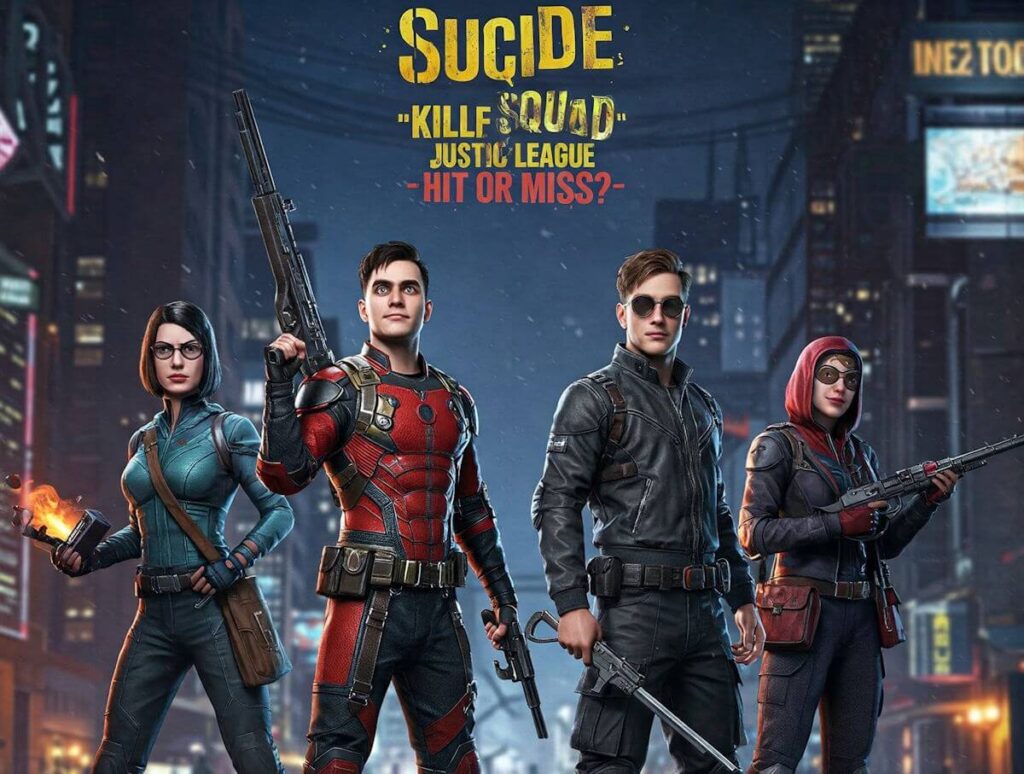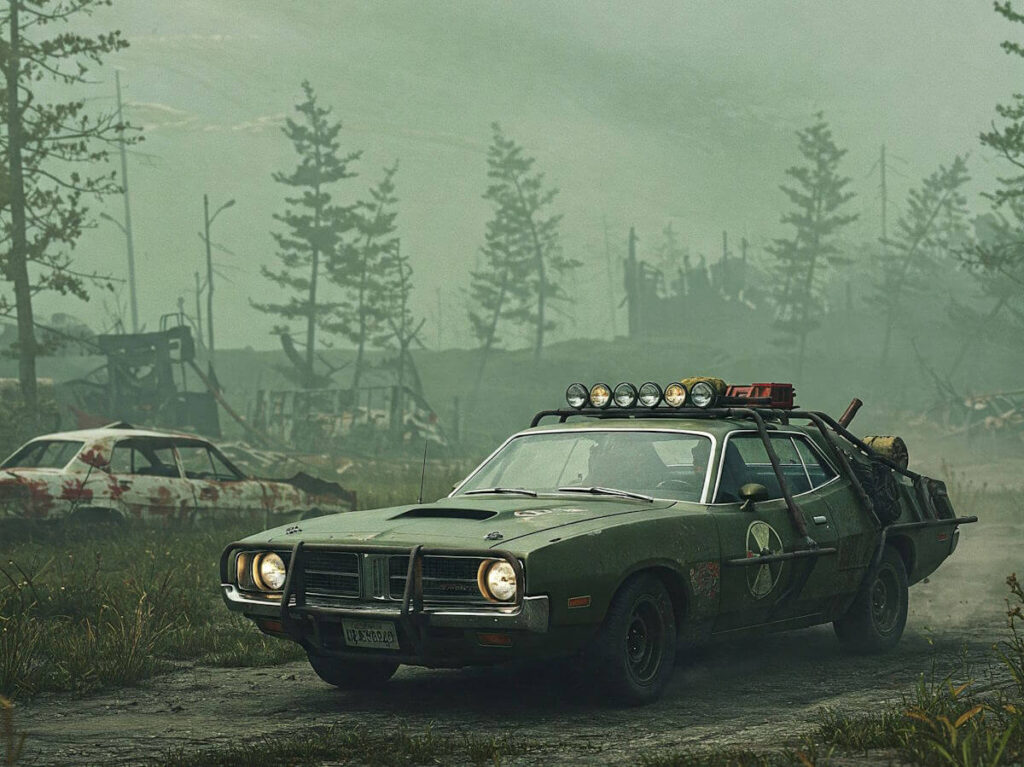The release of “Prince of Persia: The Lost Crown” marks a significant revival of the iconic franchise, a series that has captivated gamers since its inception in the late 1980s. Developed by Ubisoft, this latest installment pays homage to the original titles while introducing innovative gameplay mechanics that resonate with modern audiences. The Lost Crown signifies a fresh chapter for the franchise, merging classical narrative storytelling with contemporary design elements to attract both long-time fans and newcomers alike.
The Prince of Persia franchise is renowned for its compelling combination of platforming, exploration, and intricate combat systems, features that have become hallmarks of the series. With “The Lost Crown,” players can expect to engage in an immersive experience that retains the essence of the original games. The development team has meticulously integrated visually stunning environments, a captivating storyline, and the beloved time manipulation mechanics that have defined the series. These features underscore the game’s commitment to preserving its heritage while simultaneously pushing boundaries.
In essence, “Prince of Persia: The Lost Crown” stands as a testament to the enduring legacy of the franchise, showcasing Ubisoft’s commitment to honoring the past while innovating for the future. It is a stylish return that promises both thrills and a sense of familiarity, making it a must-play title in today’s gaming landscape.
Gameplay Mechanics and Features
The gameplay mechanics in “Prince of Persia: The Lost Crown” reflect a contemporary evolution in action-adventure gaming, combining classic elements with innovative features. One of the prominent aspects of the game is its refined platforming system. Players navigate through meticulously designed environments that challenge agility and precision. Enhanced movement techniques allow for seamless traversal, such as wall-running, grappling, and the introduction of new acrobatic maneuvers. These mechanics not only streamline movement but also encourage exploration of the richly detailed world.
Combat systems have equally received significant upgrades. Players can engage in dynamic battles utilizing an arsenal of weapons and magical abilities. The combat emphasizes a fluidity that allows for chaining attacks and defensive maneuvers, creating an engaging rhythm during encounters. New abilities, such as elemental powers that influence the battlefield, add another layer of depth to combat. This integration of combat mechanics cultivates a more immersive experience, as players adapt their strategies based on enemy types and environmental advantages.
Puzzle-solving is also a cornerstone of the gameplay. Players will encounter various challenges requiring keen observation and strategic thinking to progress. The Lost Crown introduces inventive puzzles that use the environment and character abilities, further enhancing engagement. New mechanics, like temporal manipulation, allow players to alter time in specific scenarios, revealing hidden pathways and solutions. This innovative approach to puzzles not only enriches gameplay but also underscores the Prince’s journey through time and space.
In sum, “Prince of Persia: The Lost Crown” reinvigorates its gameplay with a balance of platforming, combat, and puzzle elements. The integration of new features and refined mechanics creates a comprehensive gaming experience that stands out among previous titles in the series.
Art Style and Visuals
In ‘Prince of Persia: The Lost Crown’, the artistic direction signifies a remarkable evolution in the franchise’s visual aesthetics. The developers have meticulously crafted a striking combination of traditional Middle Eastern influences and modern design sensibilities, which collectively enrich the overarching narrative. The character designs are an embodiment of this unique style, featuring fluid animations and intricate details that breathe life into iconic personas. Each character is encapsulated in a dynamic design that not only reflects their backgrounds but also emphasizes their roles within the engaging storyline.
The environments in ‘The Lost Crown’ serve as a canvas through which the game’s rich heritage is illustrated. Players are transported through meticulously designed landscapes that range from lush gardens to foreboding castles, each contributing to the immersive experience characteristic of the Prince of Persia series. The use of vibrant colors and atmospheric lighting enhances the visual storytelling, allowing players to feel the grandeur and tension of the game’s world. The attention to detail in environmental design is evident in both the foreground and background elements, which harmoniously interact to create a comprehensive sense of place. This deliberate artistry forms an integral aspect of the game, making exploration not just a task, but an aesthetic journey.
Moreover, the animation styles employed throughout the game amplify the overall immersion. The fluidity of movement, whether in combat or traversal scenarios, not only showcases the protagonist’s agility but also immerses players in the action. Each animation sequence is carefully choreographed to allow players to feel as if they are part of a larger narrative, rather than mere spectators. This integration of art style and visuals in ‘Prince of Persia: The Lost Crown’ ultimately enhances the storytelling, allowing for a seamless blend of gameplay and narrative, ensuring that players are fully captivated by the enchanting world presented to them.
Storyline and Character Development
The narrative of “Prince of Persia: The Lost Crown” weaves a complex tapestry that intricately combines themes of destiny, redemption, and sacrifice. Set in the mythical landscapes reminiscent of ancient Persia, the story embarks on a journey filled with breathtaking settings and formidable challenges. Players are introduced to a richly detailed world where the protagonist, a young prince, faces his most daunting trials yet, as he unravels the mystery surrounding the Lost Crown that possesses immense power.
The game begins with the prince on a quest to restore peace to his kingdom, which has been thrown into chaos due to the malevolent forces wielding the Lost Crown. This crucial element of the story not only serves as a powerful artifact but also as a symbol of the prince’s personal journey. Throughout the adventure, he must confront his fears, contend with past mistakes, and evolve into a leader worthy of his title. This evolution is marked by poignant moments of character development, as players witness the prince grapple with his responsibilities and his relationships with other key characters.
Alongside the prince, new characters are introduced, each enriching the narrative landscape. These include potential allies and formidable adversaries, all sculpted with distinct attributes and motivations, facilitating engaging interactions that further drive the plot. Highlights of character arcs reveal transformations driven by choices made during gameplay, allowing players to experience not just the thrill of action but also the depth of emotional connection to the storyline. The skillful integration of these elements not only enhances the overall gaming experience but also ensures that the narrative remains engaging and resonant throughout the journey.
Comparative Analysis with Previous Titles
The Prince of Persia series has long been celebrated for its immersive storytelling, intricate gameplay mechanics, and visually striking environments. With the release of “Prince of Persia: The Lost Crown,” it is crucial to compare this latest installment with its predecessors to understand the directions taken in gameplay, visual presentation, and narrative depth.
One of the most significant shifts in “The Lost Crown” is the gameplay mechanics, which blend the classic formula of platforming and combat with new enhancements tailored for modern gaming. Unlike earlier iterations, particularly “Warrior Within” and “The Sands of Time,” which focused heavily on combat and time manipulation, this entry puts a greater emphasis on exploration and puzzle-solving. Players are encouraged to engage with the environment more dynamically, utilizing abilities that both honor past gameplay while introducing new dimensions to traversing the fantastical landscapes.
Visually, “The Lost Crown” represents a notable evolution. The graphics are significantly more advanced than those seen in titles like “The Two Thrones.” The developers have adopted a more stylized art direction that enhances character animations and environmental details, contributing to a more immersive experience. This change not only showcases the technical advancements of current-generation consoles but also aligns with contemporary aesthetic trends in the gaming industry.
In terms of storytelling, “The Lost Crown” seeks to honor its roots while presenting a fresh narrative that is less linear than previous titles. Earlier games like “The Sands of Time” centered around a singular storyline with tight character arcs, whereas this installment embraces a more intricate plot that allows for player choices to impact the outcome, thereby increasing replay value.
The reception of “The Lost Crown,” in comparison to earlier entries, reflects a blend of nostalgia and innovation. As fans of the series embark on this new journey, many are thrilled with how the game honors its legacy while pushing boundaries in gameplay and presentation, indicating a promising future for the franchise.
Music and Sound Design
The musical score and sound effects in “Prince of Persia: The Lost Crown” play a pivotal role in shaping the player’s experience. The game’s soundtrack has been thoughtfully composed to complement its narrative and gameplay mechanics. Drawing from a rich tapestry of cultural influences, the music transitions fluidly between moments of tension and serenity, echoing the protagonist’s journey through perilous landscapes and intricate puzzles. The orchestration utilizes diverse instruments that evoke the game’s setting, enhancing both immersion and emotional resonance.
Sound effects further enrich the game’s environment, providing auditory cues that are crucial for gameplay. Each sound is meticulously crafted to correspond with in-game actions, such as the clashing of swords or the subtle whispers of the wind in a deserted canyon. This attention to detail not only enhances realism but also informs players about their surroundings, guiding them through challenges and enriching their navigational experience.
Moreover, the audio landscape contributes significantly to the game’s ambiance. Instances of ambient sound design create a backdrop that resonates with the game’s aesthetics, allowing players to feel as if they are truly part of a living, breathing world. The blend of musical and sound elements cultivates a captivating atmosphere, making crucial emotional moments more impactful. As players traverse through the richly detailed levels, the interactive soundscape shapes their emotional journey, making each encounter more alive and memorable. Visually exhilarating gameplay is thus paired with an equally compelling auditory experience, a hallmark of the series that elevates “The Lost Crown” beyond mere action and adventure into a holistic artistic expression.
Reception and Critique
Upon its release, “Prince of Persia: The Lost Crown” garnered a diverse array of reactions from both players and critics, solidifying its position within the gaming community. The consensus indicates a well-received title that resonates with both nostalgia and modern gaming sensibilities. Reviews highlighted the game’s lush visual aesthetics and fluid gameplay mechanics, reminiscent of the franchise’s classic roots while seamlessly incorporating contemporary design elements.
Many players praised the game for its engaging storyline and character development, noting how these features enriched the overall experience. The ability to traverse stunning landscapes, combined with the innovative combat system, has been described as a significant strength. Critics further emphasized the revitalization of parkour mechanics, allowing for smoother navigation and enhancing the thrill of exploration. The technical craftsmanship, particularly in graphics and sound design, received commendations, signaling a robust production value that captivates players’ attention.
However, not all feedback was entirely positive. Some critiques focused on the pacing of the narrative, suggesting that certain segments felt drawn out, potentially diminishing engagement for a portion of the player base. Additionally, challenges associated with enemy AI were mentioned, leading to an uneven difficulty curve that could frustrate players seeking a more balanced experience. Furthermore, while the revival of classic elements garnered appreciation, a segment of players expressed concerns regarding the lack of innovative features that could differentiate it from previous installments.
The overall reception of “Prince of Persia: The Lost Crown” reflects a blend of admiration for its artistic virtues and criticisms aimed at gameplay dynamics. With an atmosphere teeming with nostalgia and updated designs, it stands as a notable addition to the franchise that aims to forge connections between the past and the present in the gaming realm.
Future of the Prince of Persia Franchise
With the release of ‘Prince of Persia: The Lost Crown,’ discussions regarding the future of the franchise have intensified amongst gamers and industry analysts alike. The revitalization of this beloved series certainly opens the door to various possibilities for its evolution. One of the most anticipated prospects is the development of sequels that expand upon the narrative and gameplay established in ‘The Lost Crown.’ Given the rich lore and character depth within the Prince of Persia universe, sequels could delve deeper into the protagonist’s journey, exploring new realms and complex narratives that resonate with both longtime fans and newcomers.
Additionally, spin-off games could emerge, focusing on secondary characters or alternative storylines. This approach could provide fresh gameplay experiences while still tying back to the core elements that make the franchise iconic. For instance, exploring the journeys of notable characters from the series could introduce different mechanics or styles, appealing to various segments of the gaming audience. These spin-offs could also leverage emerging technologies, such as virtual reality, to enhance player immersion in the Prince of Persia world.
There exists an exciting potential for crossover opportunities as well. Collaborations with other successful franchises could spark innovative gameplay mechanics and narrative experiences. Integrating elements from other gaming universes could introduce Prince of Persia to a broader audience, while also inviting a fresh perspective to the gameplay dynamics. This strategy could further solidify the franchise’s place in an evolving gaming landscape, characterized by diversification and collaboration.
As the gaming industry continues to grow, the longevity of the Prince of Persia series is contingent on its ability to adapt and innovate while honoring the legacy of its past. The future remains bright as ‘The Lost Crown’ symbolizes a potential renaissance for the franchise, inviting curiosity and excitement about what may come next.
Conclusion: A Stylish Revival
In the context of modern gaming, ‘Prince of Persia: The Lost Crown’ represents a significant revival of a beloved franchise that has captured the hearts of players for decades. This installment not only pays homage to the classic elements that made the series iconic but also innovates to meet the expectations of contemporary gamers. By integrating stunning visuals, dynamic gameplay mechanics, and an engaging storyline, the title breathes new life into the platforming genre, showcasing the potential for traditional franchises to adapt and thrive in a competitive gaming landscape.
The game rejuvenates the narrative appeal of the original series while introducing fresh characters and new lore that can resonate with both nostalgic fans and newcomers alike. The emphasis on fluid exploration and combat mechanics fosters an immersive experience, appealing to a wide audience. The balance between familiar gameplay and new challenges ensures that seasoned players feel a sense of continuity while also being drawn into the innovative aspects of this latest title.
As ‘Prince of Persia: The Lost Crown’ embarks on its journey, it serves as a reminder of the franchise’s enduring legacy and its role in shaping the adventure genre within the gaming industry. The positive reception among critics and fans alike indicates that the series may be poised for renewed success. This installment might not only reignite interest among longtime participants of the franchise but could also attract a new generation of players eager to delve into its rich narrative and captivating environments. Ultimately, ‘The Lost Crown’ encapsulates the essence of a stylish revival, paving the way for future developments in the Prince of Persia lineage and setting a high standard for upcoming titles in the gaming realm.




